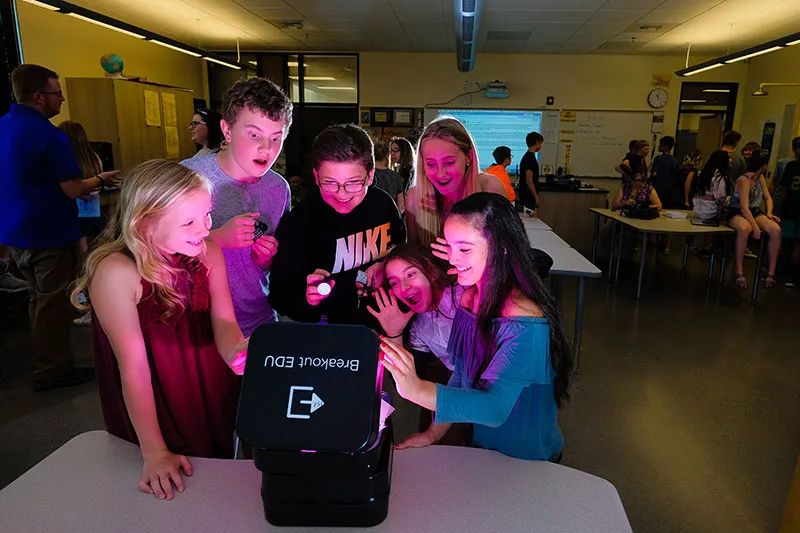
Out of the Box Education
How escape room style games are finding their way into the classroom
Walking into Katy Lefler and Michael Thomas’ science class at Ben Steele Middle School is like stepping into an adventure. Kids are huddled over sheets of paper with a few large and small locked boxes in front of them. As the noise of chatter fills the room, a giant clock counts down how much time students have left to crack the code and unlock the clues before them.
This is Breakout EDU, an escape-room-style educational challenge designed to get kids to work together and use what they’ve learned in class in an “out of the box” way.
“In the educational industry, the big focus in 21st-century learning is the four C’s — creativity, collaboration, communication and critical thinking,” says Ann Brucker, game developer and community manager with Breakout EDU. “They are actually using all of those right now.”
Today, the hints embedded in the game put these students’ knowledge of cell division — anaphase, meiosis and mitosis — to the test. A story sets up the game’s mission: The kids are told the science teacher left the key to the microscope cabinet on her desk and the evening custodian locked it in a box. In order to see cells and explore, they have to put their own brain cells to use to unlock the cabinet. They have only 30 minutes and, for now, the only clue is a web link written on a slip of paper. Three. Two. One. Go!
Screams are heard all around the room. “Hey, I think I’ve got something!” one boy exclaims. Each cluster of kids has the same set of tools. As one locked box is popped, it reveals a piece of paper showing each stage of cell division jumbled on the page. Once the kids put the pictures in chronological order, they shine the black light found in the first locked box on the back of the paper to reveal a series of arrows that match up with slide lock outfitted with the same directional arrows.
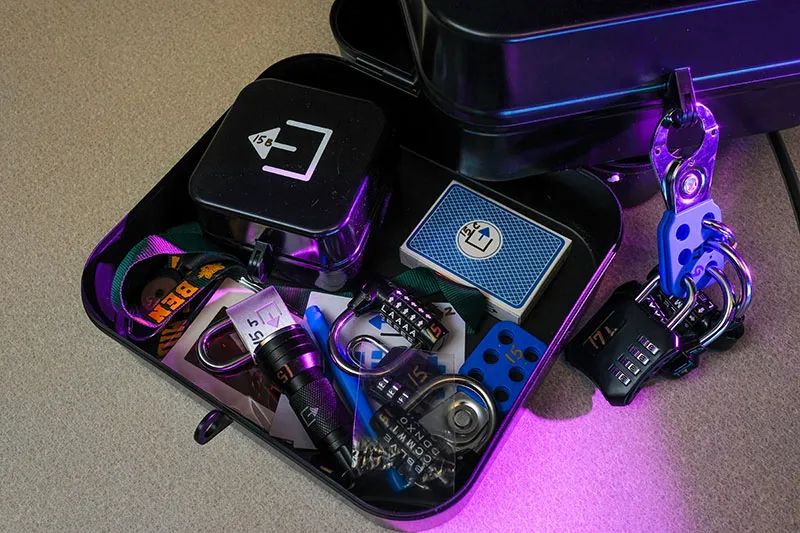
Another lock pops. Kids smile and cheer. With three more locks to open, it’s on to the next clue.
“Making learning relevant and fun is worth a gazillion dollars to me as a teacher,” Lefler says. “Twenty-first-century classrooms must mix up delivery to keep learning fresh and relevant. Teachers shouldn’t always ‘regurgitate facts’ but rather use content knowledge to solve problems, just like in real life.”
When Ann Brucker heard the buzz about Breakout EDU at last summer’s International Society for Technology in Education conference, she was more than a little intrigued about this brand-new startup. She couldn’t, however, even get close to the gutted-out school bus the company used to let teachers give the Breakout EDU games a try.
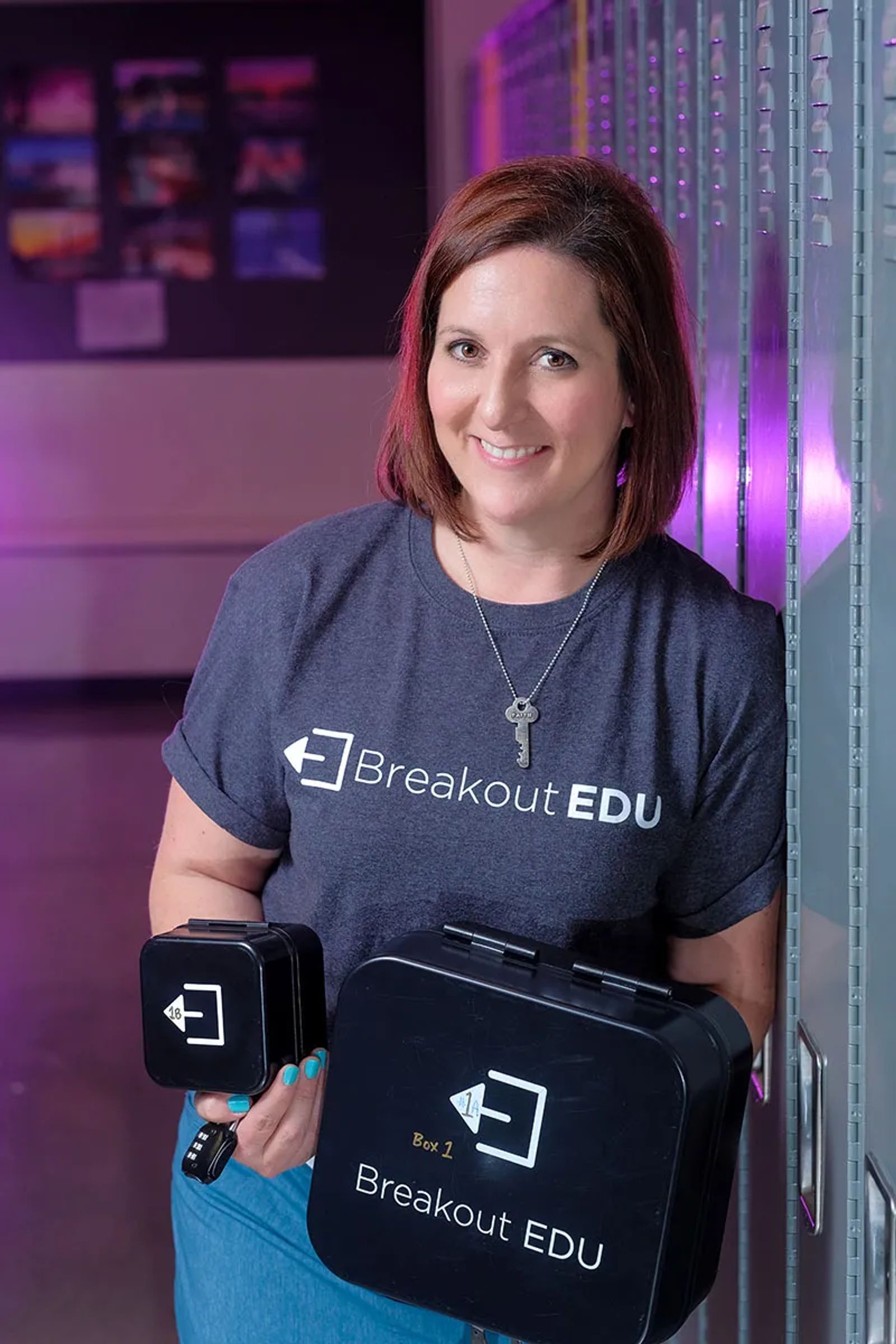
“So, I ordered a kit when I got home,” Brucker says. The kit, she explains, features a series of boxes, a handful of locks and full access to the platform of games offered through the company.
“School started and I brought it out to a classroom like this, set it up and played it with the kids. I thought, ‘What have I been doing all these years?’ I was talking at kids and teaching them and hoping it all sunk in.”
When she saw the lightbulb go on in kids and saw the lessons they’d learned in class being used within the game, she says, “I had this moment where I thought, ‘I have been doing this all wrong!’” In the past, Brucker says, she found herself “swooping in” to help those kids who were struggling. “All that did was rob them of the opportunity to discover the answer themselves.”
As Brucker talks, she points to groups of kids in Lefler and Thomas’ class.
“You will see some people are sitting back more as observers and others are more hands-on,” Brucker says. “We can look at how these kids work together. Who is the great communicator? Who is the really shy one that we need to keep an extra eye on?”
Right now, Billings School District 2 has 74 kits in classrooms all over town. Lefler and Thomas were thankful for a grant from the Billings Education Foundation that helped put 18 of them at Ben Steele Middle School, benefiting more than 250 kids.
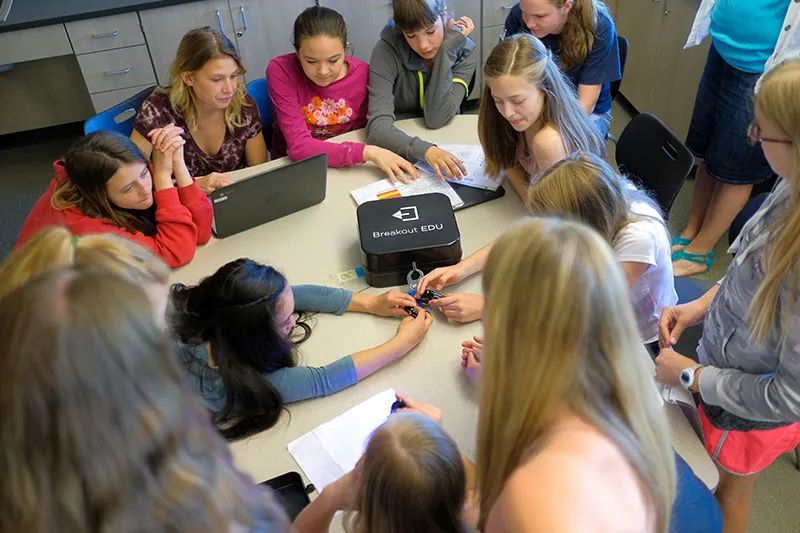
“Simply put, real-life problems aren’t presented in a textbook, worksheet or on a standardized test,” Thomas says. “Real life comes at you in many different ways and students need to be prepared to think on their feet and rely on their knowledge as well as their problem-solving skills.”
Lefler adds that this kind of learning took a little bit of an adjustment at first. “Some students are frustrated for a bit, then have that ‘Eureka!’ moment.”
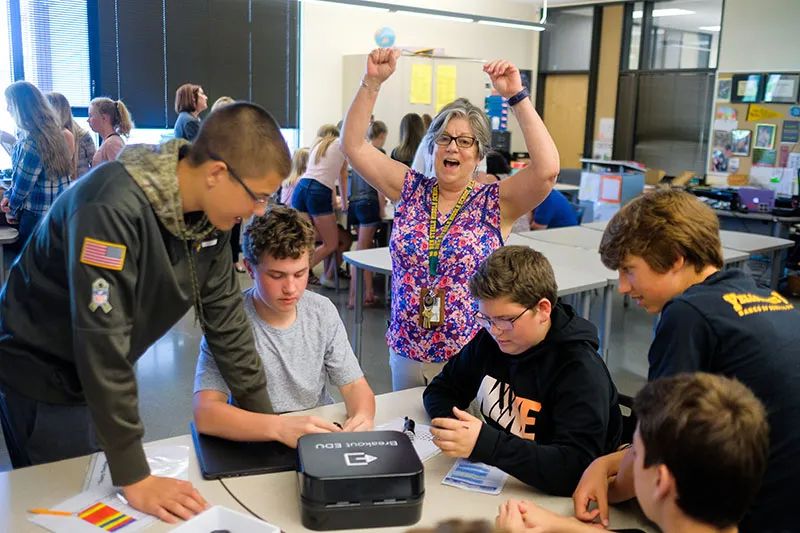
As the students pack up their kits and revel in their educational victories, it’s clear they love the excitement of trying to beat the clock to put their smarts to use.
“It’s an amazing feeling when you get that lock that you’ve been trying to unlock for five minutes,” says seventh-grader Brandon Huston. “We already know this stuff, but we get to use computers and talk it out with our friends. When we get to do that, it boosts productivity. Collaboration is key. There is always that one person who tries to help guide you to the finish line.”
Next year, teachers who use Breakout EDU will have an extra gadget in their educational tool belt. The company is adding the ability to create student accounts, giving each teacher insight into a student’s grasp of the lessons at hand.
“I can push out a game to students through the platform and it will attach data to the game,” Brucker says. “How long did it take them to play the game? How successful were they? So, for those teachers who do want more of an assessment, you get that added layer of quantifiable data.”
Breakout EDU also wrote a student course that kids can take to learn how to create and publish their own Breakout EDU games. It adds additional learning opportunities to the mix, encouraging the use of creative writing to not only set up the theme of the game but weave the clues together. They learn video production skills to help share their game in a multi-media way.
“This is a game changer,” Brucker says. “It changes the way teachers can supplement knowledge.”
Having used the boxes only twice, Thomas is already surprised at what he’s witnessed in his classroom.
“The first time the students come into the room and see the boxes, they are immediately curious,” she says. “They want to dig in and go for it. Once they realize that they need to do a little content-related thinking, they don't even hesitate because their curiosity and competitive nature overrides any reservations they may have. My favorite moments come from students who traditionally struggle, but have found success in this area and they have seized the opportunity to learn.”
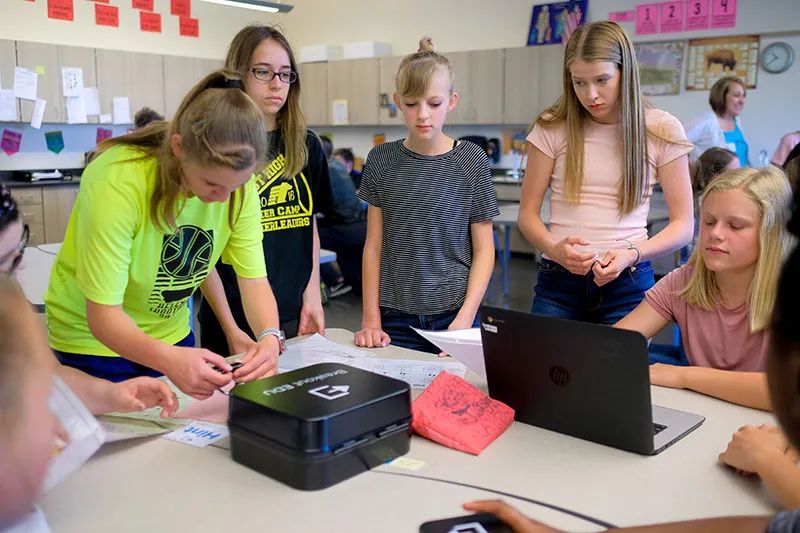
While these kits will never replace the chapter test, lab time and microscope work, in addition to traditional reading and writing assignments, Thomas says it’s an innovative approach he’s looking forward to cracking open more this coming school year.
“Maybe that new form of delivery or the locked boxes full of mystery are the key to creating a lifelong learner,” Thomas says. “Who knows? These Breakout EDU kits are one more powerful tool in our belts.”
WHAT IS BREAKOUT EDU?
Breakout EDU is an immersive learning games platform. With Breakout EDU kits, teachers can turn classrooms into an academically focused escape room. They facilitate the use of games, and students use teamwork and critical thinking to solve a series of challenging education-based puzzles in order to open a locked box. For more, visit breakoutedu.com/getstarted
WANT A BOX FOR YOUR FAMILY?
You don’t have to be an educator to buy one. Each kit costs $150 and comes with not only the locks and boxes but full access to the platform of games that can be played as a family. You can also get a free account on Breakout EDU and give the featured digital games developed by the Breakout EDU team a try. These games are similar to the hands-on kits but without the physical locks and boxes.














